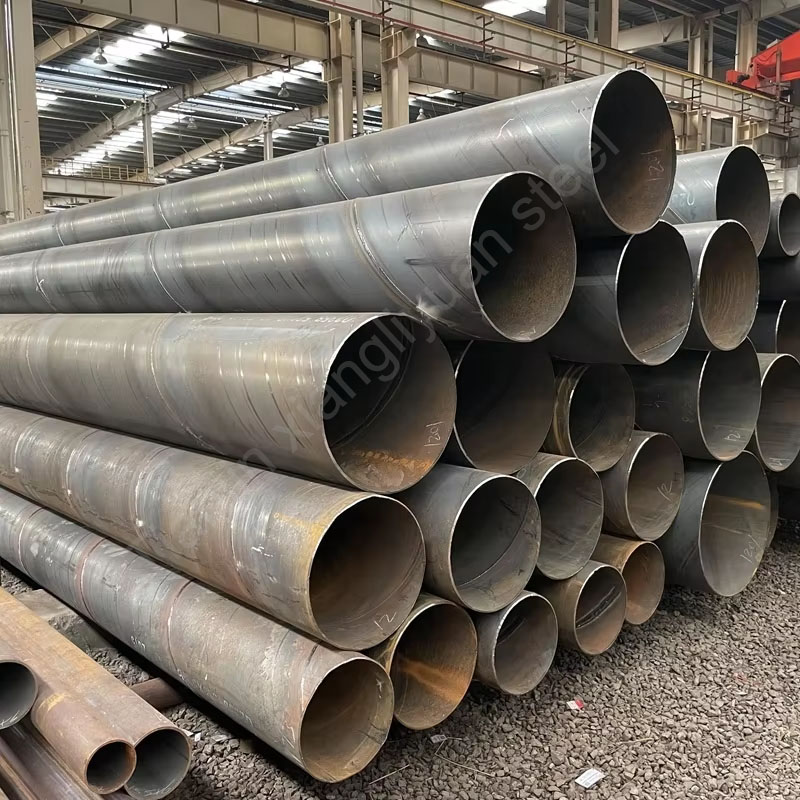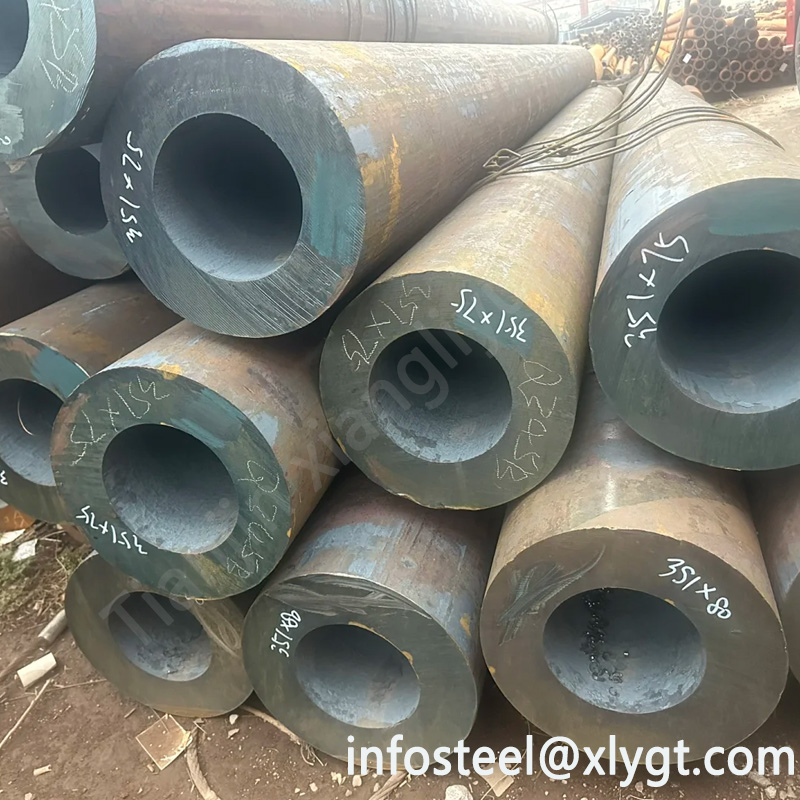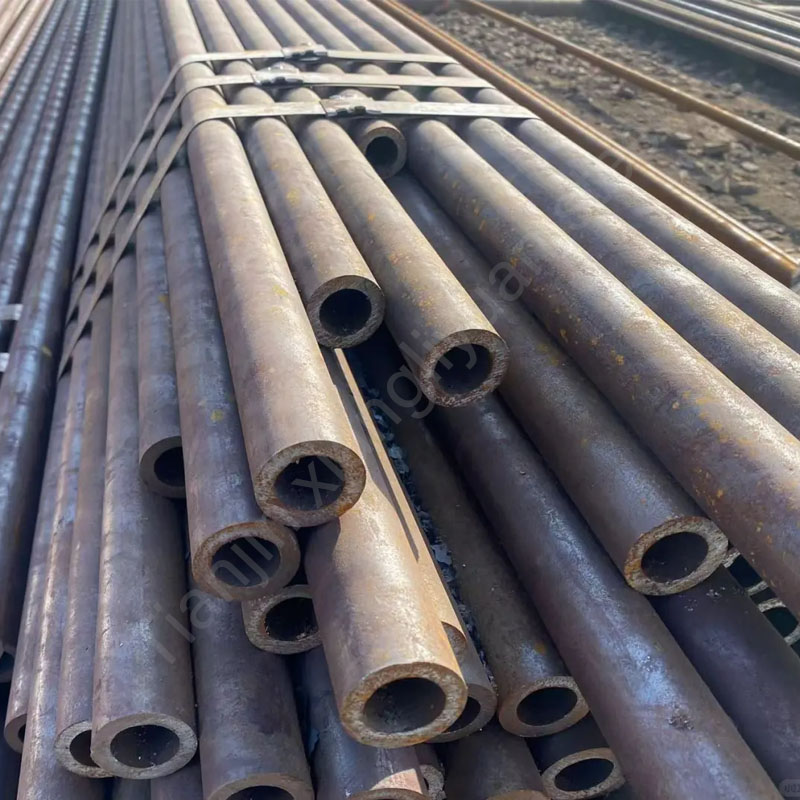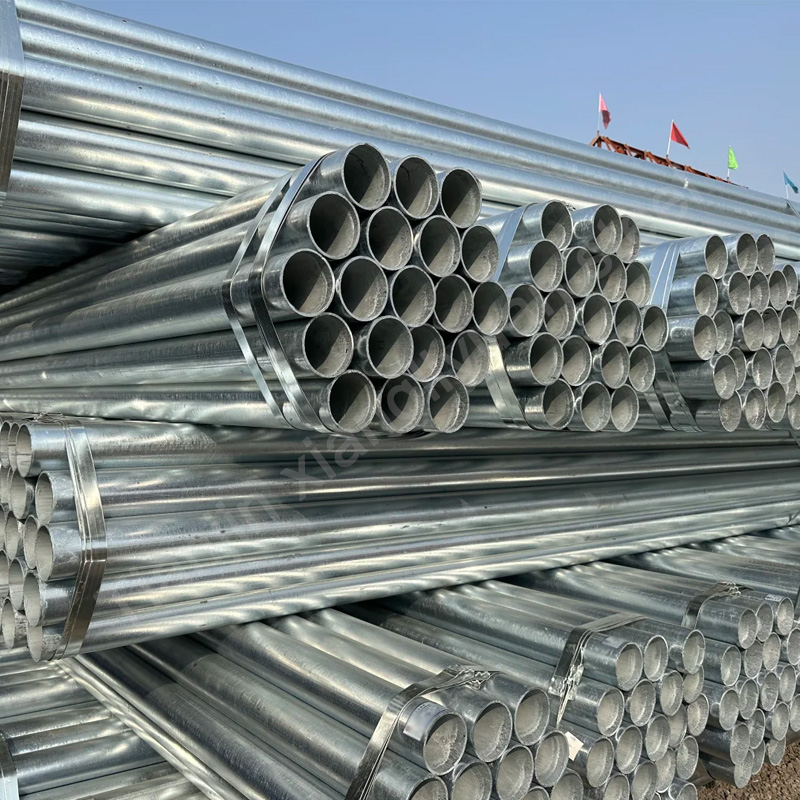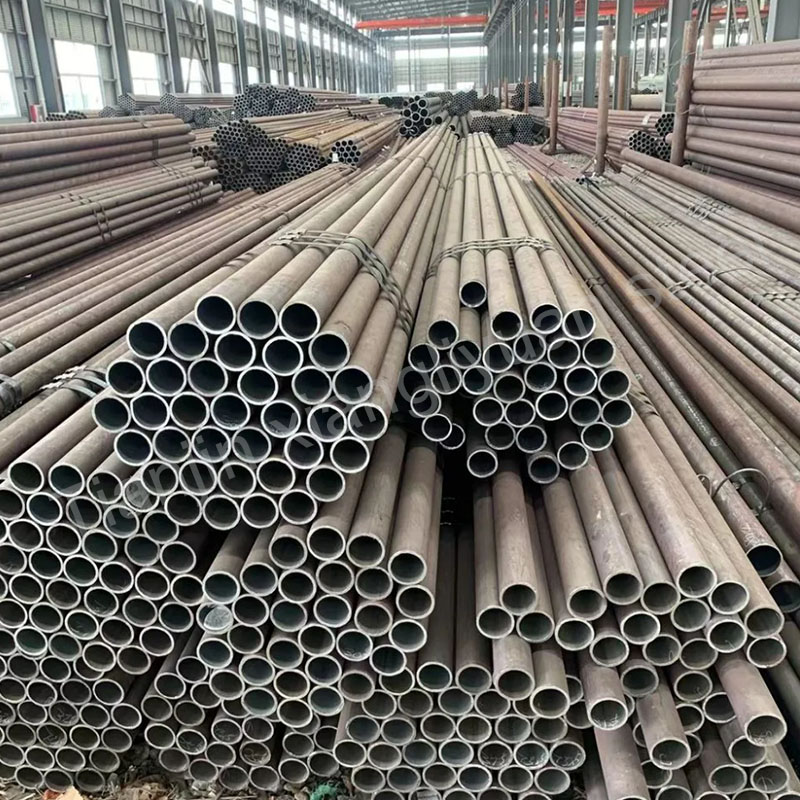Spiral welded pipe is a steel pipe manufactured by spiral welding technology. Spiral welded pipe is usually used to transport fluids such as oil, natural gas, water, as well as in structural engineering and bridge construction.
The production method of spiral welded pipe is to roll the steel coil into a tube blank at a certain spiral angle (forming angle), and then weld it to form a continuous long tube. The specific process is as follows:
Steel coil unwinding: First, the steel coil is unrolled into a steel strip through an unwinding machine.
Shearing and forming: The steel strip is passed through a rolling machine and curled into a tube blank according to the set spiral angle. The size of the spiral angle depends on the width of the steel strip and the final pipe diameter.
Welding: The spiral seam is welded by automatic submerged arc welding technology (SAW). The welding process is usually divided into internal welding and external welding to ensure the strength and quality of the weld seam.
Shaping: After welding is completed, it is shaped by a straightening machine to ensure the straightness and flatness of the pipe.
Non-destructive testing: The quality of the weld is checked by ultrasonic testing and X-ray testing to ensure that the weld is defect-free.
Water pressure test: Spiral welded pipes are subject to water pressure test to ensure that they can withstand the working pressure.
Cutting and packaging: According to customer requirements, the steel pipes are cut into the required length, packaged and transported.
Features of spiral welded pipes
High strength: Spiral welded pipes can use narrower steel strips to produce large diameter steel pipes, and the weld strength is high.
Flexible production: By changing the forming angle, pipes of different diameters can be produced with the same width of steel strip, which has strong adaptability.
Long weld seam: The weld of spiral welded pipes is spiral and the weld length is long, so the weld quality requirements are high.
Low cost: Compared with straight seam welded pipes, spiral welded pipes have higher production efficiency and better material utilization.
The following are several common spiral welded pipe standards:
1. API 5L
Application: API 5L standard is mainly used for transmission pipelines in the oil and gas industry.
Steel grade: X42, X46, X52, X56, X60, X65, X70, X80, etc.
Features: API 5L standard has strict requirements on the mechanical properties, dimensional tolerances, chemical composition, etc. of steel pipes to ensure their high reliability and safety in oil and gas transportation.
2. GB/T 9711
Purpose: Mainly used for the transportation of oil, natural gas and other combustible fluids.
Steel grades: L245, L290, L360, L415, L450, etc.
Features: This standard specifies the chemical composition, mechanical properties and non-destructive testing requirements of different steel grades to ensure safe application under various working conditions.
3. SY/T 5037
Purpose: Mainly used for the transportation of fluids such as oil and natural gas, as well as water supply and drainage pipelines.
Features: SY/T 5037 standard is applicable to thick-walled, large-diameter spiral welded pipes, specifies the dimensional tolerances, physical and mechanical properties of steel pipes, and is applicable to general oil pipelines.
4. ASTM A252
Purpose: Mainly used for the manufacture of structural piles.
Steel grades: Grade 1, Grade 2, Grade 3.
Features: ASTM A252 standard spiral welded pipes are widely used in pile foundation projects and structural infrastructure such as bridges and ports, requiring the pipes to have good strength and toughness.
5. EN 10219
Purpose: Applicable to cold-formed hollow steel pipes for structures.
Steel grades: S235, S275, S355, etc.
Features: This standard is applicable to the European market and specifies the dimensions, mechanical properties and chemical composition of cold-formed welded steel pipes, mainly used for structural buildings.
6. ISO 3183
Purpose: ISO 3183 is an international standard for steel pipes for oil and gas industry pipelines.
Features: ISO 3183 is similar to the API 5L standard and is applicable to oil and gas pipeline projects in the international market, specifying the specifications, performance and inspection requirements of pipelines.
7. JIS G3101
Purpose: Mainly used in structural engineering and construction fields.
Steel grades: SS330, SS400, SS490, SS540, etc.
Features: This standard is applicable to structural steel pipes in the Japanese market and specifies the mechanical properties and chemical composition of steel pipes.
8. DIN 1626
Purpose: Mainly used in the German and European markets, it is applicable to seamless steel pipes and welded steel pipes, especially structural and pressure pipes.
Features: The DIN 1626 standard has detailed provisions on the performance, dimensional accuracy, chemical composition, etc. of pipes, and is widely used in machinery, structures and pressure systems.
Other common standards:
CSA Z245.1: Canadian standard, applicable to steel pipes in the oil and gas industry.
ISO 9598: International standard, applicable to steel pipes for water and sewage transportation.
Spiral welded pipes are widely used in the following fields:
Oil and gas transportation: Spiral welded pipes are widely used to transport fluids such as oil and natural gas, especially in long-distance pipeline transportation.
Municipal water supply and drainage engineering: used to transport water and sewage.
Structural engineering: used for pile foundations and supporting structures in structural engineering such as bridges and roads.
Construction industry: used as building materials in high-rise buildings and large structures.
Spiral welded pipes have become an important part of the pipeline industry with their flexible production, high strength and wide application fields.

